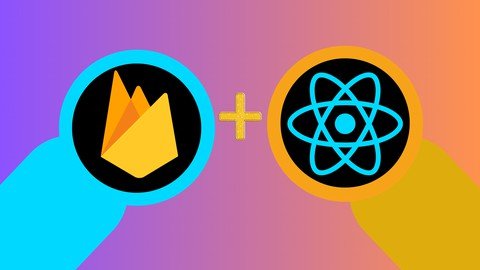Fundamentals Of Electro Magnetic Fields And Waves

Free Download Fundamentals Of Electro Magnetic Fields And Waves
Published 5/2023
MP4 | Video: h264, 1280×720 | Audio: AAC, 44.1 KHz
Language: English | Size: 1.34 GB | Duration: 4h 28m
Learn the fundamental principles, concepts and fundamental aspects of electromagnetic fields and waves
What you’ll learn
Fundamental topics on Electromagnetic fields
Vector algebra for electromagnetic fields
Review on Coordinate systems
Electrostatics
Requirements
The person must have patience and interest to learn the subject
little bit of mathematics like differentiation and integration required
Description
This course is for those who are pursuing a bachelor’s degree in electronics and communications engineering and is an advantage for them to get good knowledge and score well in the examinations.Nowadays, electromagnetics plays a vital role because of the advancements in technology. Electronic circuits and network circuits have the limitation that they only describe the voltage, current resistance, etc., but they cannot give the electric field intensity, attenuation constant, phase constant, lambda, or wavelength types of parameters. Therefore, network theory fails to give the above parameters. So electromagnetic field theory is the advancement of network theory.In this subject, you may know some fundamental concepts .Section 1: Deals about the the field, vector and scalar fields, unit vectors, position vectors ,distance vectors etc.,Section 2: Deals about the vector algebra, which includes the dot product rules, some basic formulas of vector algebra and vector calculus, the cork screw rule, and the vector scalar triple product and scalar triple product discussed elaborately, which are required for solving the problems in electromagnetic fields theory.Section 3 : This is all about the review of coordinate systems, which include the cartesian coordinate system or rectangular coordinate system, cylindrical coordinate system, and spherical coordinate system. Next, we discussed point transformations like rectangular to cylindrical or vice versa as well as cylindrical to spherical or vice versa. We also discussed what the DEL operator is, why it was used, and how these del operators are used for divergence, curl, and gradient operations with some sort of rule. Next we also discussed the statements and mathematical approach of divergence theorem, curl for stokes theorem etc., Section 4: Discussed Coulomb’s law and vector form. Coulomb’s law for n number of charges, electric field intensity, and finding the electric field intensity for different charge distributions like point charge, infinite line and sheet charge and volume charge, etc., also find the electric flux density from the electric field intensity formulas. next we discussed the gauss law and its applications Feel free to ask any doubt while learning the courseHappy learning!Skill Gems EducationPUDI V V S NARAYANA
Overview
Section 1: Fundamental topics on Electromagnetic fields
Lecture 1 Introduction
Lecture 2 Why we need electromagnetic theory?
Lecture 3 Basic definitions of electric ,magnetic,vector & scalar fields
Lecture 4 unit vector
Lecture 5 position vector
Lecture 6 Explanation of Position vector for different points like P(Ax,Ay,Az)
Lecture 7 example for position vector
Lecture 8 Distance vector
Section 2: Vector algebra
Lecture 9 dot product rules
Lecture 10 vector algebra and vector calculas properties
Lecture 11 dot product rule and problem problem
Lecture 12 cork screw right and left hand rules
Lecture 13 scalar and vector triple product rules
Section 3: Review on coordinate systems
Lecture 14 coordinate systems-rectangular coordinate or cartesian coordinate systems
Lecture 15 Rectangular coordinate system
Lecture 16 cylindrical coordinate system
Lecture 17 problem
Lecture 18 spherical coordinate system
Lecture 19 rectangular to cylindrical
Lecture 20 cylindrical to spherical and rectangular to spherical point transformations
Lecture 21 Del operator and its rules
Lecture 22 basic definitions of divergence and curl
Lecture 23 Basic understanding of divergence
Lecture 24 divergence,curl
Section 4: Electrostatics
Lecture 25 Coulombs law
Lecture 26 Coulombs law in vectorial form
Lecture 27 Coulombs law applied for different N number of charges (vector form)
Lecture 28 Electric field intensity
Lecture 29 charge distributions for different charge configuarations
Lecture 30 Electric field intensity in a infinite line element
Lecture 31 Electric field intensity due to a circular ring of charge
Lecture 32 Electric field intensity due to infinite sheet of charge
Lecture 33 Electric flux and its properties
Lecture 34 Electric flux density for different charge distributions
Lecture 35 Gauss law and its statement
Lecture 36 Important point to be noted for gauss law
Lecture 37 Equivalent Gusssian surfaces for different charge distributions
Lecture 38 Applications of gauss law :point charge
Lecture 39 Applications of gauss law :line charge
Lecture 40 Applications of gauss law :sheet of charge
Lecture 41 Applications of gauss law volume of charge
Lecture 42 Energy and potential
Lecture 43 Potential and potential difference
Lecture 44 potential due to N number of charges
Lecture 45 Maxwells 2nd equation (del cross E=0 in a closed surface)
Lecture 46 E=-Del V Relation or Proof
Lecture 47 what is energy ? and Energy stored in an electrostatic field for point charge
Lecture 48 Energy stored in an electrostatic field for volume charge& others charges
Lecture 49 Continuity equation
Lecture 50 Relaxation time
Lecture 51 poisson’s and laplace equation
This course is really helps allot for under graduate and post graduate like engineering students
https://www.udemy.com/course/electro-magnetic-fields-waves/
DONWLOAD FROM RAPIDGATOR
efngj.F.O.E.M.F.A.W.part1.rar.html
efngj.F.O.E.M.F.A.W.part2.rar.html
DONWLOAD FROM UPLOADGIG
efngj.F.O.E.M.F.A.W.part1.rar
efngj.F.O.E.M.F.A.W.part2.rar
DOWNLOAD FROM NITROFLARE
efngj.F.O.E.M.F.A.W.part1.rar
efngj.F.O.E.M.F.A.W.part2.rar



